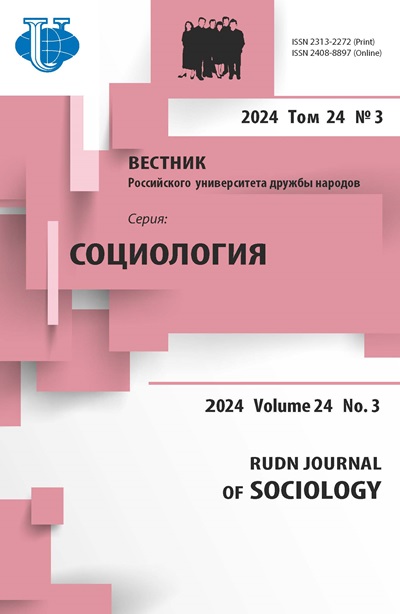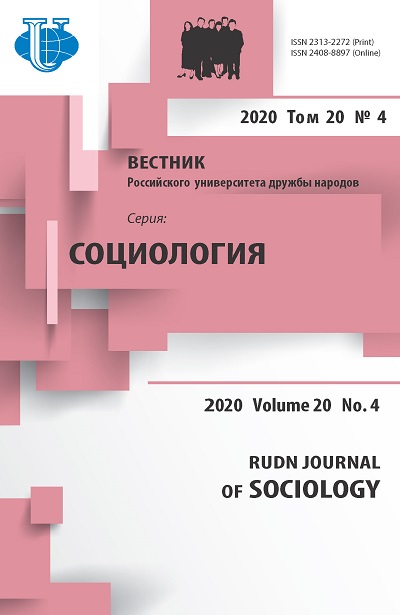Проблема социальных различий и социальной сплоченности в Объединенных Арабских Эмиратах
- Авторы: Аль-Орайми С.З.1
-
Учреждения:
- Университет Объединенных Арабских Эмиратов
- Выпуск: Том 20, № 4 (2020)
- Страницы: 837-846
- Раздел: Современное общество: актуальные проблемы и перспективы развития
- URL: https://journals.rudn.ru/sociology/article/view/25214
- DOI: https://doi.org/10.22363/2313-2272-2020-20-4-837-846
Цитировать
Полный текст
Аннотация
Статья посвящена воздействию культурного разнообразия на уровень социальной сплоченности в Объединенных Арабских Эмиратах (ОАЭ). Эта богатая нефтью страна возникла в 1971 году как федерация семи эмиратов. Сегодня это небольшое государство, население которого составляет около 10 миллионов человек, а граждане - всего 10%. Доходы от нефтедобычи позволили ОАЭ добиться высочайших показателей в социальном и экономическом развитии за недолгую историю своего существования. В последние десятилетия страна переживает серьезные социальные изменения, несмотря на то что модернизационные процессы блокируются на высочайших уровнях государственного управления. Дело в том, что по причине исторически сложившейся демографической структуры ОАЭ всегда зависели от внешней рабочей силы. Квалифицированные и неквалифицированные работники прибывают в страну из соседних государств, этот приток продолжается несколько десятилетий, что не могло не изменить социально-демографическую структуру ОАЭ. После всемирного экономического кризиса 2008 года и последовавшего за ним глобального экономического спада в ОАЭ резко выросла численность населения. Квалифицированные работники со всего мира устремились в страну, и Дубай стал основным центром региональной торговли - сегодня его свободные экономические зоны считаются лучшей технологической базой для предпринимательской активности в сфере услуг и логистики. В ОАЭ живут представители более двухсот национальностей, причем большинство из них - это трудовые мигранты-мужчины. Нестабильная и несбалансированная демографическая структура определяет особое культурное доминирование - национальные культуры мигрантов доминируют над местной культурой. Демографический перекос в пользу мигрантов в структуре населения ОАЭ порождает своего рода дисгармонию. Эмиратцы ощущают себя в собственной стране меньшинством и предпочитают переезжать из старинных городов в пригородную зону, что создает множество конфликтных ситуаций. Все перечисленное не может не сказываться на уровне социальной сплоченности, общинной идентичности и прямом социальном взаимодействии составляющих общество культурных групп. Чтобы показать накопившиеся в ОАЭ социальные различия и противоречия, автор представляет результаты личных интервью и групповой дискуссии, в которых критическую оценку сложившейся ситуации дают те, кто оказался в центре изменений.
Ключевые слова
Об авторах
Суад Зайед Аль-Орайми
Университет Объединенных Арабских Эмиратов
Автор, ответственный за переписку.
Email: s.aloraimi@uaeu.ac.ae
профессор социологии, заведующая кафедрой социального управления
15551, Аль-Айн, Абу-Даби, ОАЭСписок литературы
- Al Oraimi S.Z. UAE: Between Instilling Identity and Strengthening Belonging. Emirates Center for Strategic Studies and Research; 2018 (In Arabic).
- D’Appollonia A.C. Migrant Mobilization and Securitization in the US and Europe. How Does It Feel to Be a Threat? Palgrave Macmillan; 2015.
- Freire P. Selections from the Prison Notebooks of Antonio Gramsci. New York; 1970.
- Heywood A. Political Ideas and Concepts: An Introduction. London; 1994.
- Kathiravelu L. Migrant Dubai: Low Wage Workers and the Construction of a Global City. Palgrave Macmillan; 2016.
- Mehta S. This Land Is Our Land: An Immigrant’s Manifesto. Farrar, Straus and Giroux; 2019.
- Mesoudi A. Cultural Evolution: How Darwinian Theory Can Explain Human Culture and Synthesize the Social Sciences. Chicago University Press; 2011.
- Morgan S.P. Is low fertility a twenty-first-century demographic crisis? Demography. 2003; 4.
- Santucci A. Antonio Gramsci. New York; 2010.














